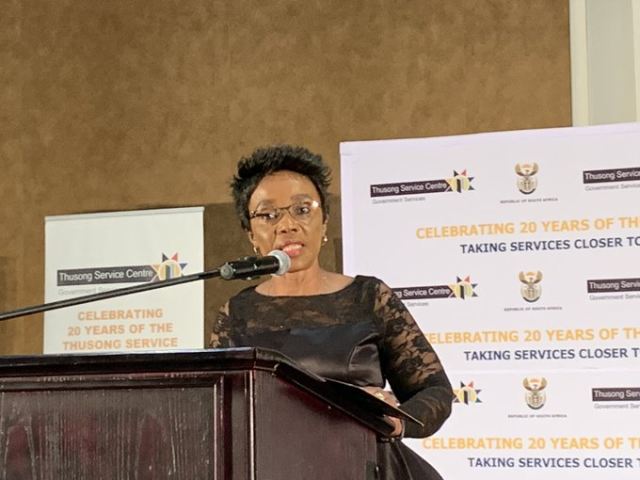South Africa Strengthens Digital Inclusion with Universal Design Framework
Minister Chikunga emphasized that the rapidly accelerating pace of digital transformation makes it more urgent than ever to prioritize accessibility in the design and deployment of technology.

- Country:
- South Africa
South Africa has reaffirmed its commitment to fostering a more inclusive and accessible society through the implementation of the National Strategic Framework on Universal Design and Access. This comprehensive tool is designed to ensure that all citizens, particularly those with disabilities, can fully participate in every aspect of life, including the digital realm.
The announcement was made by the Minister in the Presidency responsible for Women, Youth and Persons with Disabilities, Sindisiwe Chikunga, during the country’s commemoration of Global Accessibility Awareness Day (GAAD) on Thursday. Observed annually on the third Thursday of May, GAAD is a global initiative to raise awareness about the importance of digital accessibility and the inclusion of people with disabilities in an increasingly technology-driven world.
A Growing Imperative in the Digital Age
Minister Chikunga emphasized that the rapidly accelerating pace of digital transformation makes it more urgent than ever to prioritize accessibility in the design and deployment of technology. With tools like artificial intelligence (AI) now becoming ubiquitous in web platforms, public services, and communications, the need for inclusive design has become critical.
“As we see more institutions and service providers shift towards AI-powered systems and online platforms, we must ensure that these innovations do not leave anyone behind,” Chikunga said. “Digital inclusion must be proactive and not an afterthought.”
She pointed out that accessibility features powered by AI, such as automatic captions, screen readers, alternative text generation, and voice assistants, have made tremendous progress in bridging gaps for persons with disabilities. However, she cautioned that these tools require rigorous human oversight to avoid bias, errors, and misinterpretations.
“These technologies must always be tested and validated by people to ensure they are both accurate and useful. True inclusion goes beyond automation—it requires empathy, intention, and accountability,” she added.
The National Strategic Framework: A Roadmap for Inclusion
The National Strategic Framework on Universal Design and Access is grounded in the principle that universal design is not a luxury or compromise, but a basic necessity. It outlines specific guidelines and standards for ensuring accessibility across all sectors—from education and public infrastructure to digital services and employment.
The framework is not just aspirational; it is prescriptive. It serves as a guide to inform policies, legislative processes, and service design across the public and private sectors. A key component is the disability inclusion lens, ensuring that the voices and needs of persons with disabilities are central to decision-making and design.
Chikunga explained that the goal is to transition from voluntary compliance to the eventual enforcement of accessibility standards, holding institutions accountable for inclusive design and universal access.
Addressing Everyday Barriers: Practical and Immediate Solutions
To further advance accessibility in digital spaces, the department identified several common yet solvable barriers that frequently exclude people with disabilities. These "quick wins" include:
-
Poor Colour Contrast: Text should be clearly visible and readable against its background.
-
Missing Alternative Text (Alt Text): Every meaningful image or hyperlink must be described using alt text so that screen readers can interpret the content effectively.
-
Keyboard Navigation Issues: All website functionalities should be accessible using only a keyboard, catering to users who cannot use a mouse.
-
Lack of Focus Indicators: Visual cues should show users where they are on the page, aiding those with visual impairments or cognitive challenges.
These recommendations are intended to be implemented immediately by developers, content creators, and institutions to make digital environments more inclusive without waiting for large-scale overhauls.
Global Accessibility, Local Impact
South Africa’s renewed dedication to digital accessibility coincides with a global push for more equitable digital ecosystems. According to global estimates, more than 1 billion people live with some form of disability, with approximately 3.3 million in South Africa alone.
By aligning national initiatives with international observances like GAAD, South Africa not only raises awareness but also galvanizes collective action.
“GAAD gives us a chance to reflect, educate, and recommit to building a world where everyone, regardless of ability, can navigate and thrive in digital spaces,” Chikunga concluded.
Through strategic planning, collaborative policymaking, and active community engagement, South Africa is taking meaningful steps to ensure that inclusion is the default—not the exception.
ALSO READ
EU Intensifies Sanctions on Russian Hybrid Threats and Human Rights Violations
Court Blocks Deportations to Libya Amid Human Rights Concerns
Nepalese Human Rights Group Advocates for South Asian Peace
Controversy Surrounds African Parks Amidst Human Rights Abuses in Congo
Mali’s Political Future in Jeopardy as Human Rights Experts Decry Crackdown










